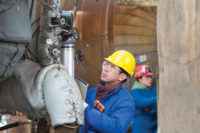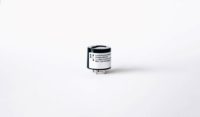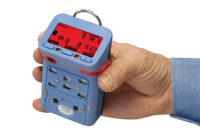For companies in which the presence of combustible and toxic gases are a way of life, protecting your people and your physical plant while ensuring business continuity is the most important function of a fixed gas detection solution. So in today’s global economy, where challenges to these are magnified, engineering a reliable, high-performance gas detection system that makes it easier and more cost effective to meet these needs is a must.
Because of the increased call for higher levels of safety, performance, standardization, economies of scale, ease of use, and overall accountability, meeting these needs and adding value to the customer experience must begin with rethinking the fixed gas detection system altogether, and looking into what’s being called a truly universal gas detection system.
By understanding the evolution of fixed gas detection, and exploring the benefits of designing, implementing and maintaining a truly universal approach to gas detection, organizations can use “universal truths” to best evaluate current systems and project the impact of this next-generation gas detection on their safety and productivity in a global economy. This evaluation must consider a number of factors that can enhance safety, while streamlining installation and minimizing maintenance. It must consider current systems and consider what’s needed in the future.
The following comparisons of the legacy systems used in the field today, and the truly universal gas detection systems can jumpstart the evaluation.
One too many
In a fixed gas detection system, a single detector is paired — and tested — with a single sensor, accommodating only a small number of combustible or toxic gases, whereas a universal system allows for a single gas detector to accommodate multiple sensors so multiple types of gases can be detected in one location. Working within the same device footprint, the transmitter is designed to support different sensing technologies: combustible gas sensing with infrared and catalytic bead sensors and electrochemical and metal oxide semiconductor sensors for toxic gases. Using equally smart sensor technology allows the construction of sensors with multiple ranges in the same package, which in turn enables range invariant calibration.
Communication protocols
Fixed gas detection systems have traditionally relied on analog signals for communication. This limits the transmission of advanced diagnostics data that ensures a safe plant environment. Adopting digital communication protocols necessitates installing new detectors and/or new sensors.
A universal system is engineered to accept new plug-and-play communication boards, as needs change and new communications protocols are required. This multiprotocol innovation — wired or wireless (when industry appropriate) — means protocols can be added without replacing the transmitter as a plant’s communication requirements change. You’ll want to make sure your transmitter accommodates a wide range of communication protocols, including Modbus, HART, wireless HART and wireless ISA100.11A. This kind of flexibility is key to a futureproof gas detection solution.
Calibration and maintenance
Due to engineering constraints, sensor calibration in a fixed gas detection system must be performed in the field, where conditions are less than ideal and both safety and performance may be compromised. However, accurate calibration is critical to satisfying both safety and performance requirements. It also impacts productivity when false alarms due to inaccurate calibration slow — or even shut down — production. Imagine the consequences of an electrochemical sensor triggering an alarm that releases a blanket of foam. The cleanup costs alone can be staggering!
Next-generation universal gas detection enables a calibration-in the-lab scenario, providing a more controlled and safe environment for establishing gas sensor parameters. This is a significant innovation, especially with legacy cat bead sensors, which required proper voltage adjustments at the point of detection.
Through advanced engineering, a transmitter’s microprocessor can remember the type of sensor installed, as well as all calibration values. This built-in system of checks and balances virtually eliminates duplication of effort and the possibility of installing the wrong sensor.
Global standards
Global certification, especially when deploying a variety of detectors, as in fixed gas detection systems, can complicate and delay the ability to engage in business as your company expands its operations.
A universal system expands the certification of a gas detector for global acceptance and plays a critical role in facilitating quick global adoption.
Cost of ownership
A fixed gas detection system means that there are more points (i.e. detectors), which means higher maintenance, more complexity and incremental costs associated with added cabling, junction boxes and wiring.
Less is more — and better — when you can reduce the number of points in a gas detection system as with universal systems. One device consolidating three points has a positive ripple effect in terms of installation and maintenance. For instance, at a site with 45 points, accepted practice would include point-to-point wiring, using a Modbus communication protocol wired back to a central location or controller. But with a multi-head scenario, handling three points each, the number of detectors is reduced to 15 devices. This approach represents significant cost savings. In fact, using a single detector that consolidates three points, with a single relay board to control three alarms, totally eliminates a costly controller. Multiply this configuration by three for every three-head detector/multiple sensor configuration, and cost of ownership is further reduced.
Workforce knowledge base
Multiple manuals or the knowledge of many different product lines can slow the installation process and impede productivity.
In today’s climate, it is becoming increasingly important to do more with a smaller, less specialized workforce. Truly universal engineering produces solutions that are simple to use with consistency in design, making products intuitive, easy to learn and easy to use.
Toolbox
A fixed gas detection system includes large inventories of sensors, detector heads and accessories, demanding a significant inventory investment.
With a universal system, a field technician looks in his toolbox and sees fewer sensors, detectors and calibration adapters, as well as fewer accessories (like deluge guards and flow cells). Universal mounting kits simplify the process in new installations, while retrofits to existing installations are significantly more manageable. This simplification also minimizes lapses in safety due to human error.
In conclusion, exploring these series of “universal truths” about next-generation fixed gas detection is a critical first step in evaluating how you protect your people and maintain the highest levels of productivity. Truly universal gas detection begins with a singularly flexible system, engineered to ensure accurate performance in a wide range of environments; considers current and future manufacturing plant environments; and plays a significant role in keeping costs under control in the face of global certification requirements and a changing workforce. How you use this insight will impact where and how successfully you conduct business.



